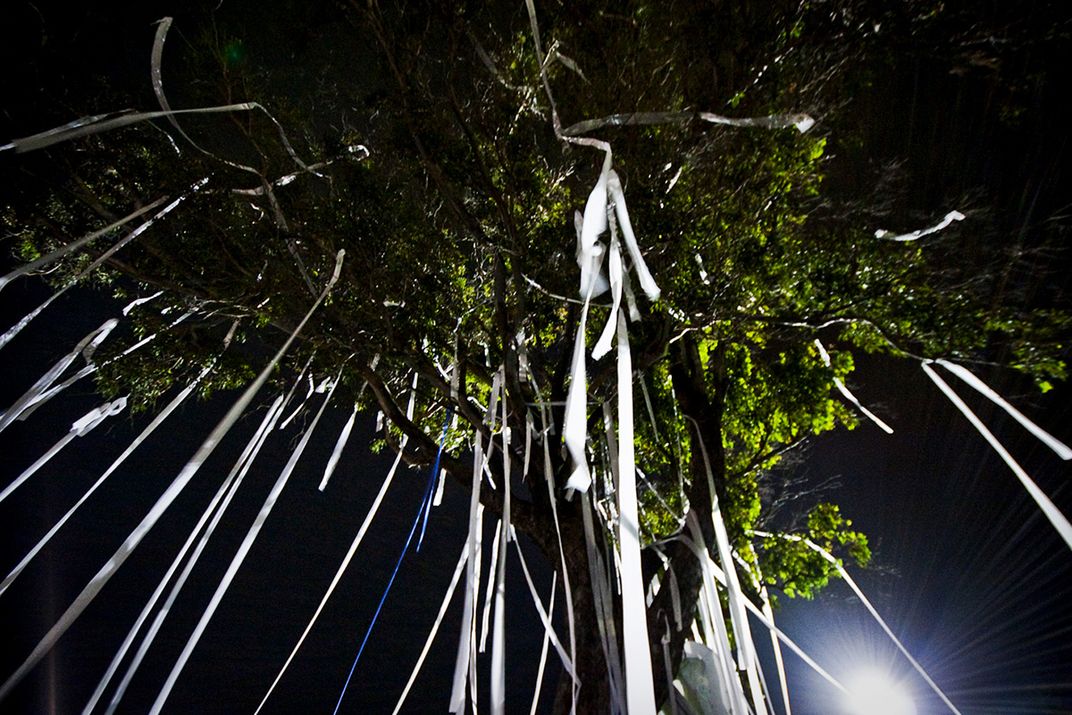Yes. The Night Before Halloween Is a Real Holiday
In New Jersey, it’s known as ‘Mischief Night.” In Detroit, it’s ‘Devil’s Night.’ And in Cincinnati, it’s … ‘Cabbage Night’?
/https://tf-cmsv2-smithsonianmag-media.s3.amazonaws.com/filer/e6/41/e641a733-5d49-4fe6-9661-bcf33107ea76/mischief-night-pumpkin.jpg)
Kids, costumes, and candy are the primary ingredients for Halloween. Or at least that’s what normally occurs each year on the night of October 31—All Hallows’ Eve, or Halloween, which has a rich folkloric tradition.
But what do you call the night before Halloween? If your answer is simply “October 30,”
- You’re not from Detroit, where it’s known as Devil’s Night.
- You’re not from Cincinnati, where it’s known as Cabbage Night.
- You’re not from the urban areas of New Jersey, where it’s known as Mischief Night.
I grew up in New Jersey—more precisely, adjacent to Newark—where Mischief Night was part of our community folklore. No one knew how Mischief Night got started—which is typical for all types of folk traditions—but everyone knew it was de rigueur for pre-teen or teenage guys (which in the late 1950s and early 1960s meant only males) to go out at night, looking to make or find minor mischief.
Time magazine provides some historical perspective, noting that Mischief Night may have first appeared in the United States in the 1930s and 1940s, possibly connected to the turmoil of the Great Depression and the threat of World War II. In subsequent years—particularly in the 1980s—it became much more violent, especially in the decaying industrial cities of Detroit and Camden, where criminal arsonists used the occasion to start hundreds of fires, largely but not exclusively in abandoned buildings, according to a report in the New York Times.
In 1954, the folklorist William Bascom authored an influential article on “The Four Functions of Folklore,” which apply fully to the traditions of Mischief Night.
A first function, according to Bascom, is simply amusement, which we experienced in the thrill of going out at night with our friends and performing minor mischief. The second function is education—not the education that occurs inside a classroom, but rather the learning that occurs informally among members of a distinct folk group. If we were fortunate, we might learn something on Mischief Night about ourselves as we underwent the transition from childhood to adulthood. And the third function is validation and reinforcement of beliefs and conduct. By sharing in the activities of Mischief Night, we helped to maintain the traditions of our folk group, which are passed from one cohort to the next.
The final and fourth function is to provide socially sanctioned and approved outlets for expressing minor aggressions, tensions, cultural taboos, and fantasies. My group of friends generally came from “good homes,” but we used the occasion of Mischief Night to test the boundaries of what we might or might not want to do, if only for a single night.
The four previous functions add up to what may be the overall function of folklore, which is to maintain the stability, solidarity, cohesiveness, and continuity of a group within the larger mass culture. All groups—whether based on occupation, religion, region, ethnicity, gender, or age—seek to preserve their own group identity. Our observance of Mischief Night was one very effective way to do so.
Of course, I understood none of this while participating in Mischief Night nearly 60 years ago. The mischievous deeds we perpetrated were never elaborate pranks carefully planned, but rather were almost always spontaneous, depending largely on chance encounters as we roamed the neighborhood streets.
A different type of detonation could result from the pumpkins that some of us might steal. The apartment buildings in the Ivy Hill neighborhood of Newark were as tall as 15 stories, and if you stole a pumpkin from outside someone’s apartment door and then dropped it from the roof, those were “the best explosions ever,” according to a source who prefers to remain anonymous.

If any members of my group ever carried matches, it was not for fires, but rather for fireworks. As one of my friends recalls: “We were throwing firecrackers at cars as they drove by. Fairly harmless stuff. But one of the cars suddenly stopped, and to our dismay we saw it was a police cruiser. The way that we all rapidly scattered in a dozen different directions was quite impressive.”
And when I would return home, our group solidarity required me to withhold everything from my parents, who were obviously not part of this particular folk group. As in the title of a popular 1957 book about childhood adventures, the exchange might be:
“Where did you go?”
“Out.”
“What did you do?”
“Nothing.”
A version of this article originally appeared in the online magazine of the Smithsonian Center for Folklife and Cultural Heritage.
/https://tf-cmsv2-smithsonianmag-media.s3.amazonaws.com/accounts/headshot/James_Deutsch.jpg)
/https://tf-cmsv2-smithsonianmag-media.s3.amazonaws.com/accounts/headshot/James_Deutsch.jpg)